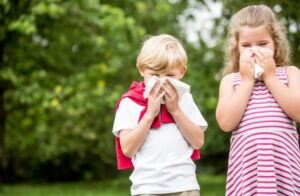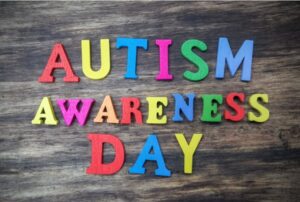Mary is a lively five-year-old girl. One winter morning, her parents noticed she suddenly had a high fever and a persistent cough. Her appetite had noticeably decreased, and she seemed lethargic throughout the day. Initially, her parents thought Mary just had a common cold and let her rest at home while drinking warm water. However, two days later, Mary’s symptoms had not improved but instead worsened, with her temperature hovering around 39°C, and she even experienced difficulty breathing at night.
Common Early Symptoms of Influenza in Children
- Fever
The primary sign of a child infected with influenza is usually a fever, with temperatures typically ranging from 38.5°C to 40°C. Sometimes, the fever is accompanied by chills, and the child may feel cold or sweat. This is a natural response of the body fighting off the virus.
- Cough and Sore Throat
A dry cough is one of the common symptoms of influenza, which may be accompanied by a sore throat. The child’s voice may become hoarse, and they might even have difficulty swallowing. The coughing can persist for several weeks.
- Runny Nose and Nasal Congestion
Another typical symptom of influenza is a runny nose or nasal congestion, usually starting as clear nasal discharge. As the illness progresses, the discharge may become thicker. Nasal congestion can make it difficult for the child to breathe, especially noticeable at night while sleeping.
- Muscle Aches and Fatigue
Influenza often causes muscle pain or joint discomfort throughout the child’s body. This pain typically leads to a reluctance to engage in physical activity, resulting in fatigue and lethargy, and even noticeable drowsiness.
- Loss of Appetite, Nausea, or Vomiting
The influenza virus can sometimes affect the digestive system, leading to decreased appetite, nausea, vomiting, or diarrhea in children. While these symptoms are not as common as fever and cough, they can occur in some children, especially infants.
- Headache and Eye Discomfort
Children may experience headaches, which can sometimes be accompanied by dry eyes or tearing. These symptoms are typically a result of the body’s systemic inflammatory response caused by influenza.
Response Measures for Early Influenza
- Seek Medical Attention Promptly
If a child exhibits the above symptoms, especially persistent high fever or difficulty breathing, parents should take them to see a doctor as soon as possible. The doctor will usually assess the child’s symptoms and conduct a physical examination to determine if they are infected with influenza. If diagnosed early, the doctor may recommend antiviral medications, such as oseltamivir (Tamiflu), to lessen the severity of the illness and its symptoms【1】.
- Ensure Adequate Rest and Hydration
During influenza, children should get plenty of rest and avoid vigorous activity. Influenza often leads to elevated body temperature and increased sweating, making hydration very important. Parents can provide warm water, clear broth, or electrolyte solutions to prevent dehydration【2】.
- Symptomatic Treatment with Medications
If a child has a fever, parents can administer acetaminophen (Tylenol) or ibuprofen under the guidance of a doctor to reduce fever and alleviate discomfort. It is essential to avoid giving aspirin to children, as it is associated with Reye’s syndrome, a potentially fatal condition【3】.
- Maintain a Clean Home Environment
Since the influenza virus spreads through the air, keeping the home environment clean is vital. Parents should ensure proper ventilation, allowing fresh air to circulate, and avoid contact with other sick individuals. Items that have been in contact with the flu patient, such as toys and utensils, should be disinfected and cleaned promptly.
Key Measures for Influenza Prevention
- Get Vaccinated
The influenza vaccine is the most effective way to prevent children from contracting influenza. Parents should ensure their children receive the flu vaccine every autumn. Although the vaccine cannot provide 100% protection, it can significantly reduce the likelihood of infection and the severity of symptoms【4】.
- Maintain Good Hygiene Habits
Teach children to wash their hands frequently, especially after coughing, sneezing, or being in public places. Parents should also encourage children to cover their mouths and noses with their elbows or tissues to reduce the chances of spreading the virus.
- Boost Immunity
Ensuring that children maintain good eating habits, get sufficient sleep, and engage in moderate exercise can help strengthen their immune systems, thereby improving their ability to combat viral infections.
Conclusion
Influenza can lead to severe symptoms in children, but with early recognition and timely treatment, they can typically recover quickly. Parents should work to prevent and respond to the threat of influenza through vaccination, good hygiene practices, and proper care in their daily lives.
References
- American Academy of Pediatrics. (2021). Antiviral Medications for Influenza.
- Centers for Disease Control and Prevention. (2022). Flu Symptoms & Complications.
- Mayo Clinic. (2021). Reye's Syndrome.
- World Health Organization. (2023). Influenza (Seasonal).













